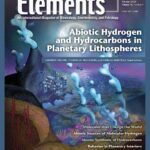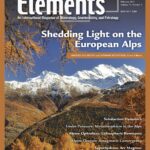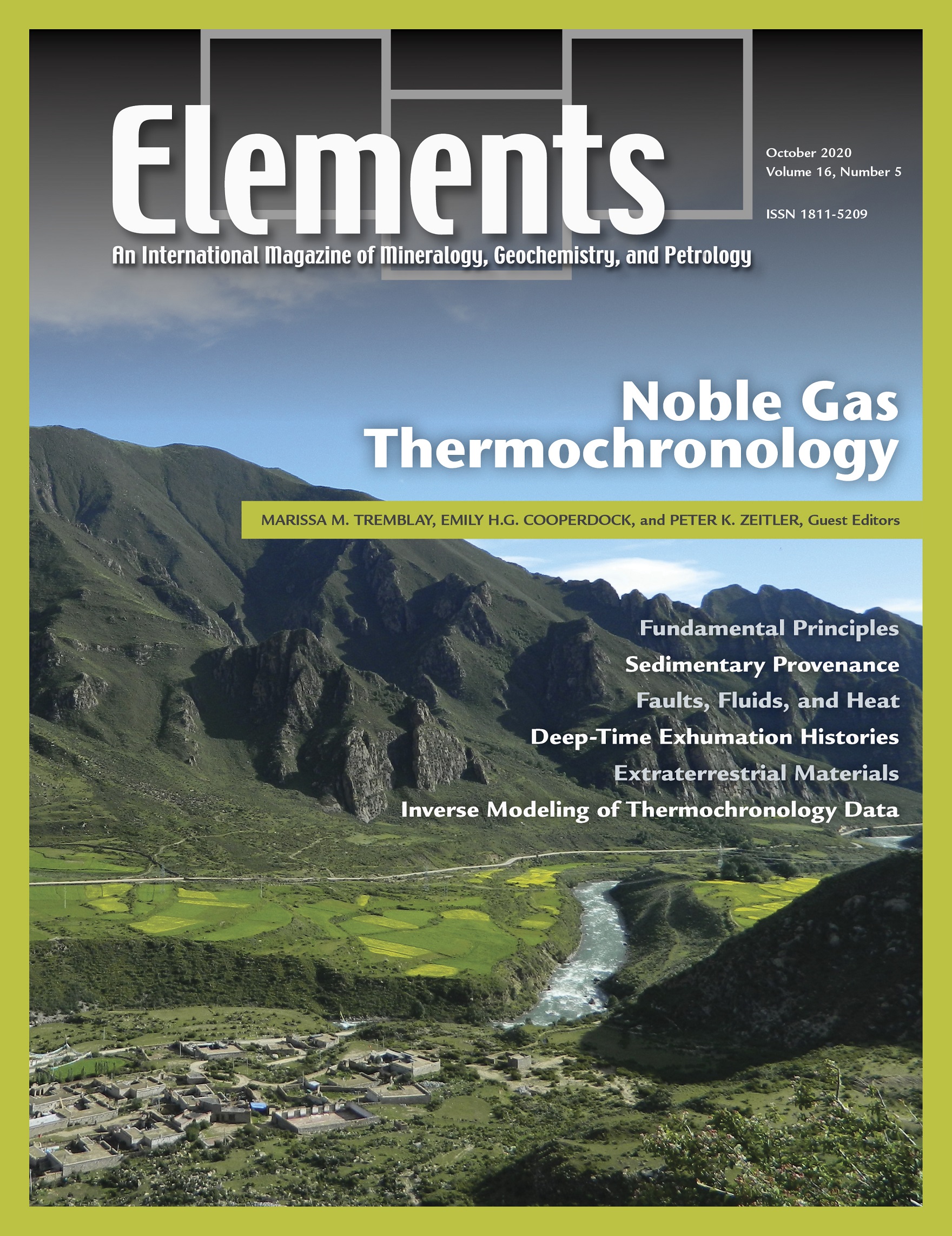
Abiotic Hydrogen And Hydrocarbons In Planetary Lithospheres, February 2020, Vol. 16, No. 1
June 28, 2024
Shedding Light On The European Alps, February 2021, Vol. 17, No. 1
June 28, 2024Noble Gas Thermochronology, October 2020, Vol. 16, No. 5
$20.00
Noble-gas thermochronology takes advantage of the time-dependent production of noble gases and the thermally activated diffusion of these gases to constrain the temperature histories of minerals found in crustal rocks. Thermochronology has become widely used to address research questions across Earth and planetary science.
Noble Gas Thermochronology
October 2020, Vol. 16, No. 5
Noble-gas thermochronology takes advantage of the time-dependent production of noble gases and the thermally activated diffusion of these gases to constrain the temperature histories of minerals found in crustal rocks. Thermochronology has become widely used to address research questions across Earth and planetary science. These questions include when and how valleys are cut by glaciers; from where sediment is sourced; what thermal conditions occur on fault planes during slip; and how the surfaces of planetary bodies evolve on billion-year timescales. This issue highlights how noble-gas thermochronology can be used to address questions like these, as well as what new avenues of research noble-gas thermochronology could be used for in the future.
Why You’ll Love Elements Magazine:
- Expert Contributors: Articles written by renowned researchers in the field of geoscience.
- Engaging Content: Join a community of readers who are passionate about Elements.
- Exceptional Quality: Each issue is printed on high-quality paper with stunning visuals and detailed illustrations that bring complex scientific concepts to life.
Order your copy of the October 2020 issue of Elements magazine today and delve into noble gas thermochronology.
Related products
-
Frontiers In Textural And Microgeochemical Analysis, August 2007, Vol. 3, No. 4
$20.00Recent advances have been made in high-resolution in situ methods to image mineral growth patterns, analyse compositional and isotopic zonation, and improve our ability to visualize, study, and model rock textures in three dimensions. These advances provide a significant step forward in the understanding of how rocks form and the history they can tell us.
-
Toxic Metals In The Environment: The Role Of Surfaces, September 2005, Vol. 1, No. 4
$20.00Metals are prevalent in the environment. They are derived from both natural and anthropogenic sources.
-
Supervolcanoes, February 2008, Vol. 4, No. 1
$20.00Explosive super-eruptions from large volume, shallow magma systems lead to enormous and devastating pyroclastic flows, the formation of gigantic collapse calderas, and deposition of volcanic ash over continent-sized areas. Recognition that future eruptions from these “supervolcanoes” will undoubtedly have severe impacts on society—and perhaps on life itself—has led to recent public and media interest.




